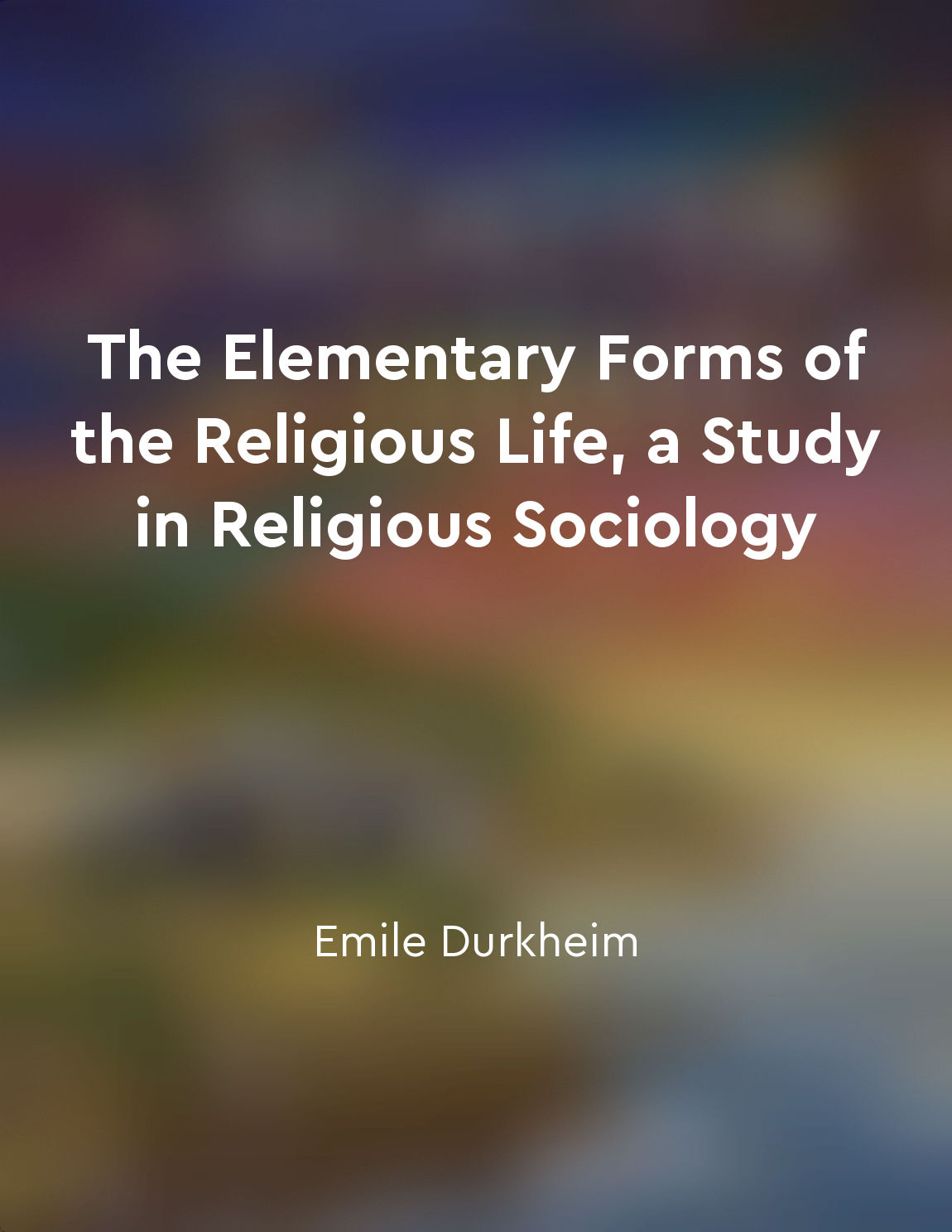Collective effervescence is generated through religious rituals from "summary" of The Elementary Forms of the Religious Life, a Study in Religious Sociology by Emile Durkheim
Durkheim posits that collective effervescence is a fundamental aspect of religious rituals. It is the intense energy and excitement that arises when individuals come together to engage in religious practices. This collective effervescence is not simply the sum of individual emotions; rather, it is a shared experience that transcends the individual and unites the group as a whole. Through religious rituals, individuals are able to connect with something greater than themselves. This sense of connection generates a powerful feeling of solidarity and unity among participants. In this way, religious rituals serve to strengthen the bonds that tie individuals together within a community. Durkheim argues that collective effervescence is a vital force in the maintenance of social order and cohesion. By bringing people together in a shared experience, religious rituals reinforce the values and norms of a society. They serve to remind individuals of their place within the larger social structure and reinforce the bonds that hold society together. Furthermore, Durkheim suggests that collective effervescence plays a crucial role in the formation of religious beliefs and practices. Through the shared experience of ritual, individuals are able to create and reinforce their understanding of the sacred. This shared experience helps to shape the collective consciousness of a society and reinforces the moral order that underpins social life.- Durkheim argues that collective effervescence is a central aspect of religious rituals. Through the shared experience of ritual, individuals are able to connect with something greater than themselves, strengthen social bonds, and reinforce the values and norms of a society. This collective effervescence is a vital force that helps to maintain social order and cohesion.


